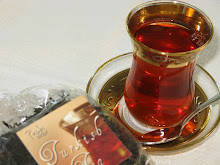

A cool front has come through making it perfect weather for soup. I prepared mercimek corba and salata for lunch. This LEVANTINE CARROT SALAD recipe from Still Life with Menu Cookbook by Mollie Katzen is reminiscent of salads we were served in
Turkey in which steamed carrots and other vegetables are marinated and served with yogurt dressing. Here are the salad ingredients:
3/4 cup chick peas
1 1/2 lbs. carrots
1/3 cup olive oil
1/4 cup red wine vinegar
2 tablespoons fresh lemon juice
1 large garlic clove, crushed
1/4 cup finely minced parsley
4 slender scallions, minced
2 teaspoons dried dill
1 teaspoon salt
freshly gound pepper to taste
1/2 teaspoon ground cumin
1. Peel carrots, and cut into 1 1/2-inch long matchsticks. Steam about ten minutes, until tender. Rinse with cold water, and drain well.
2. Combine all ingredients in a large bowl. Mix well, cover tightly, and refrigerate for several hours.
3. Prepare topping by thoroughly mixing or blending the following ingredients:
1/2 cup sesame seeds
1/4 cup yogurt
2 tablespoons minced parsley
1 tablespoon honey
1 teaspoon fresh lemon juice
1 small garlic clove, minced
dash of salt

































